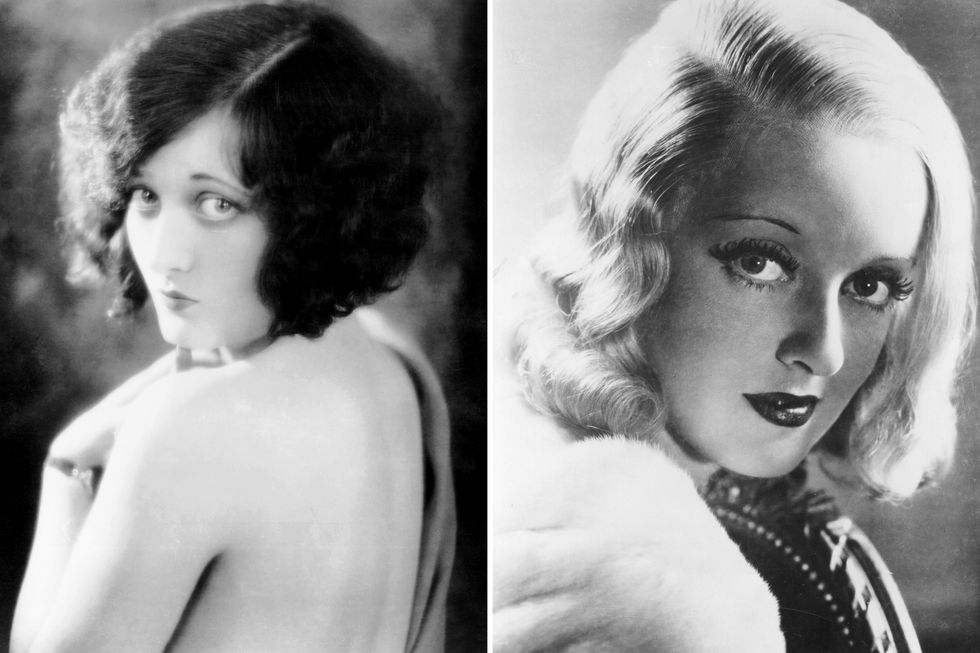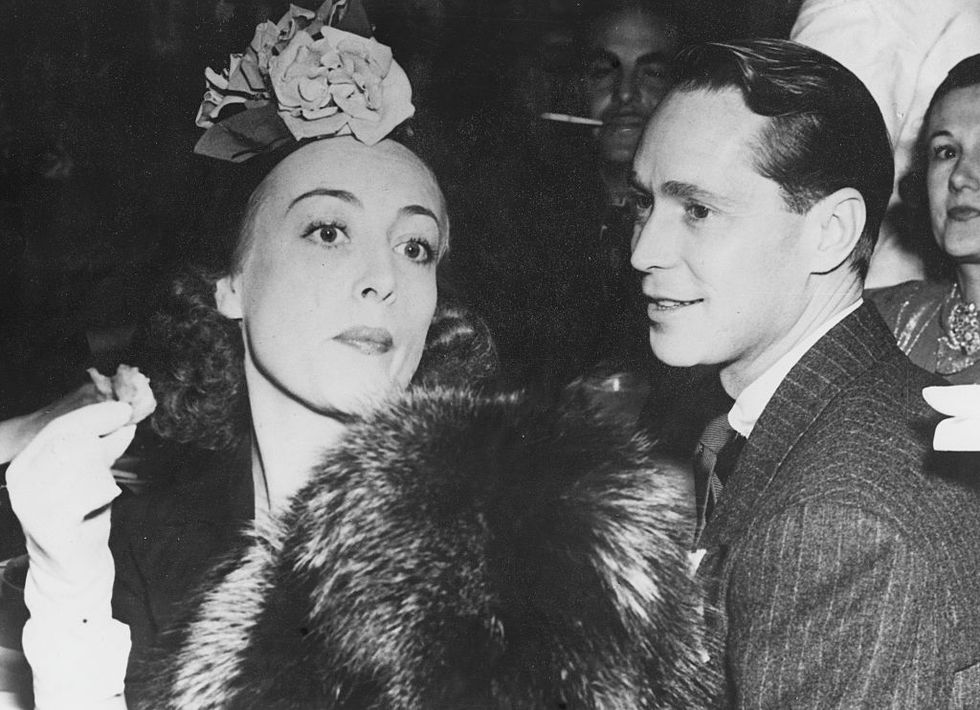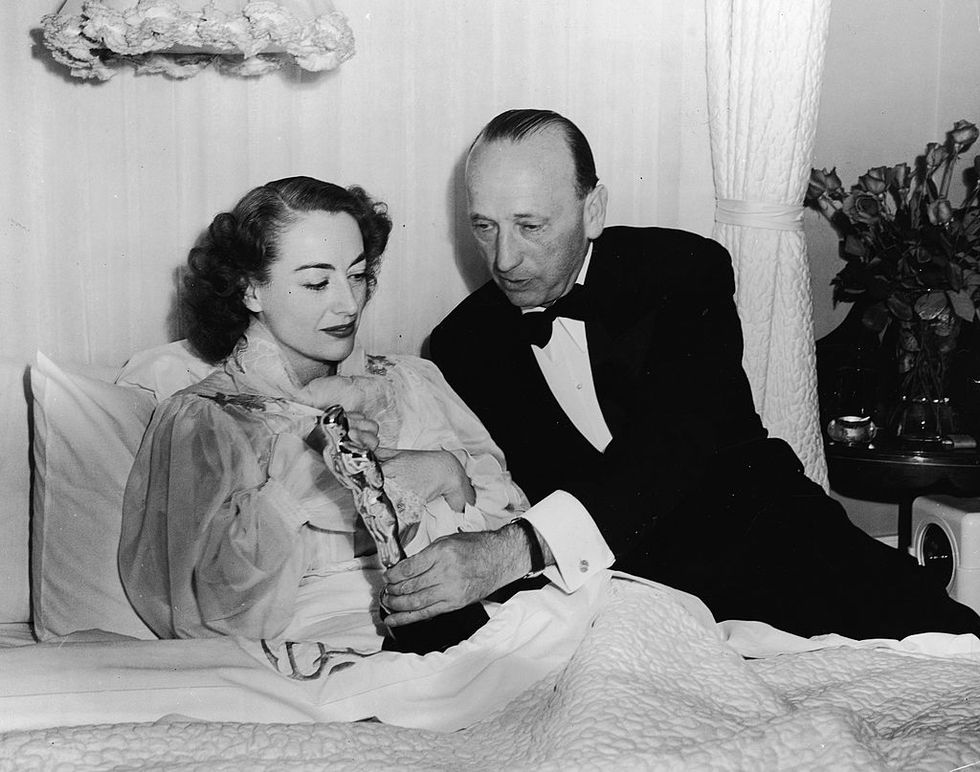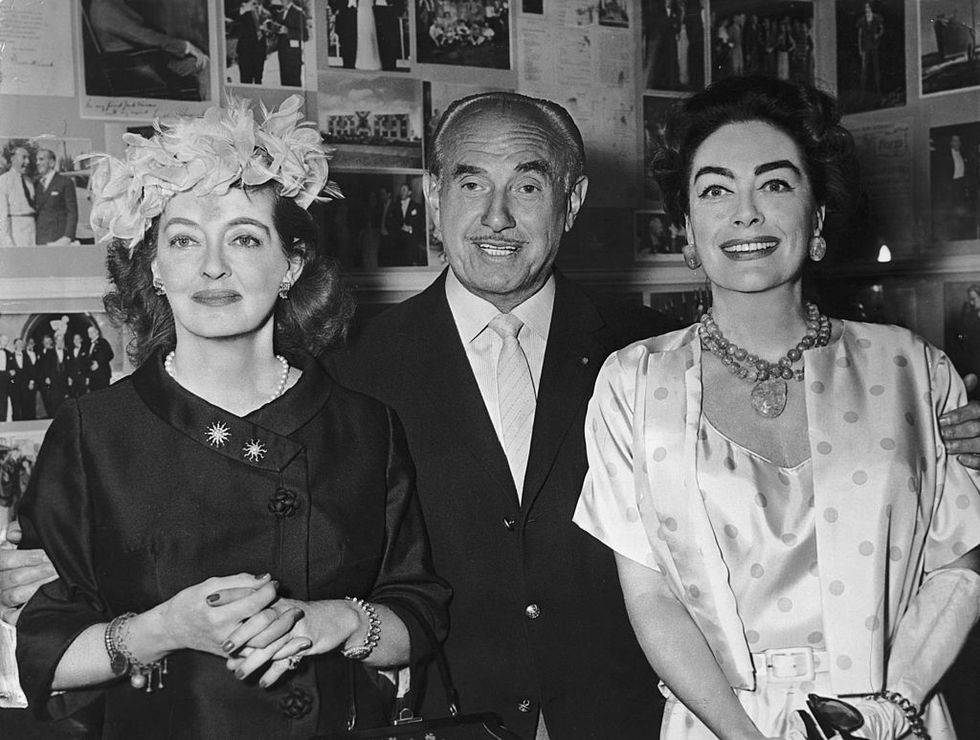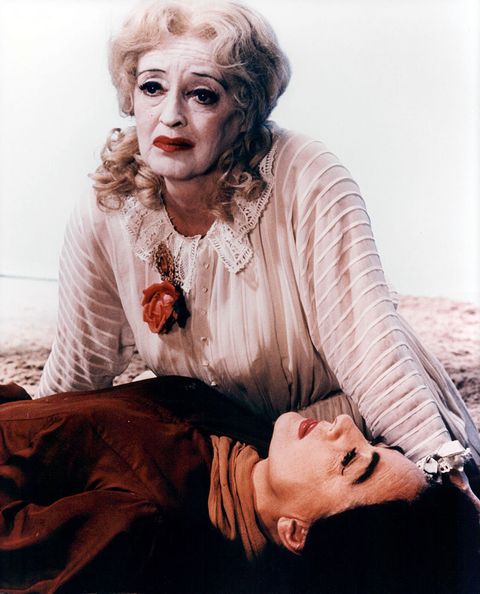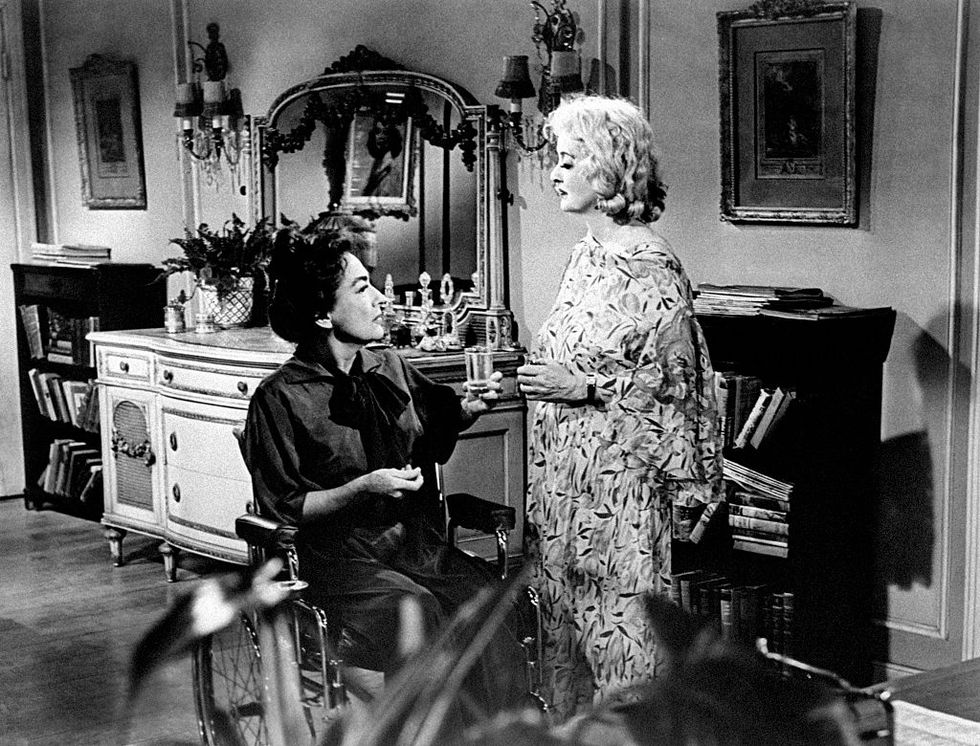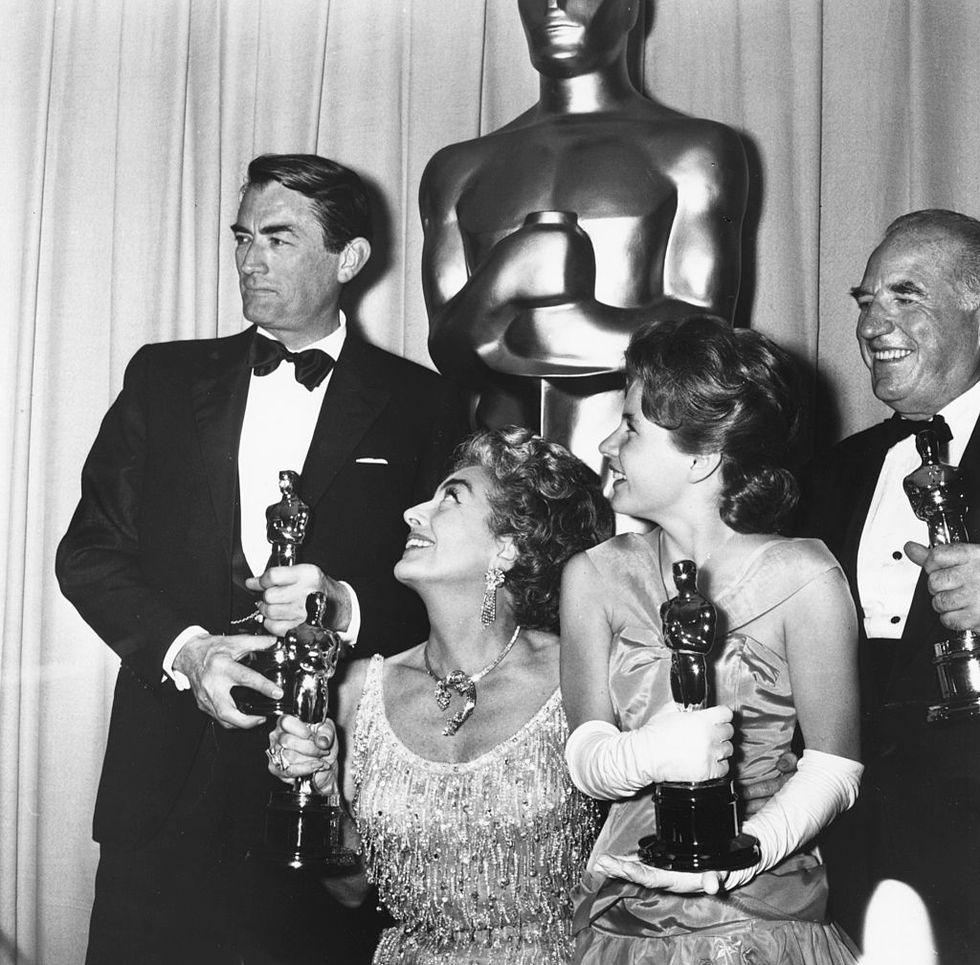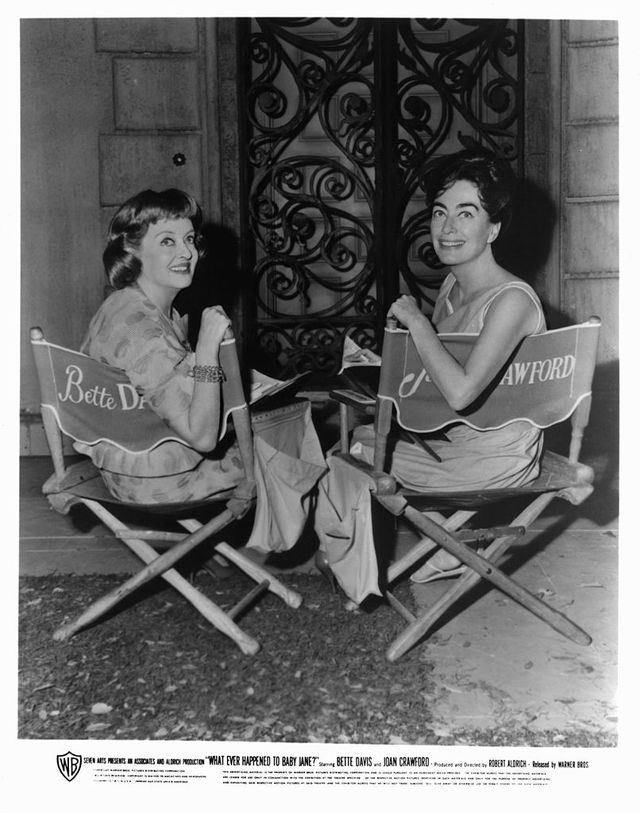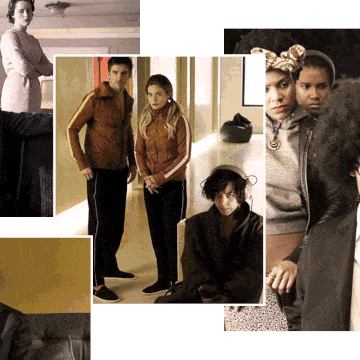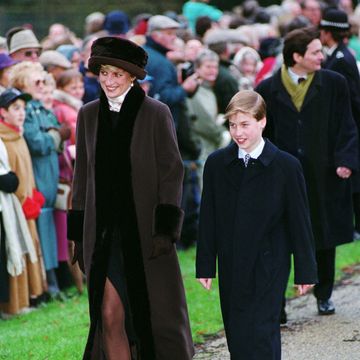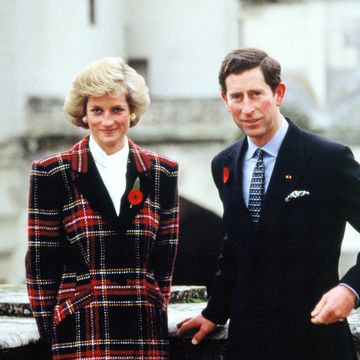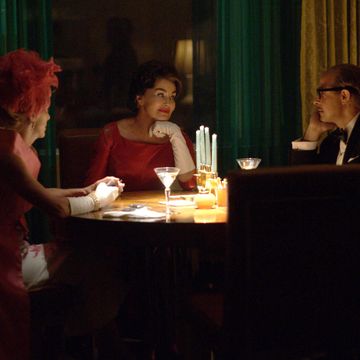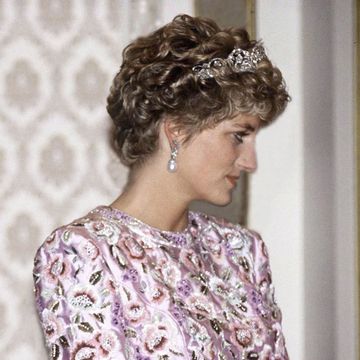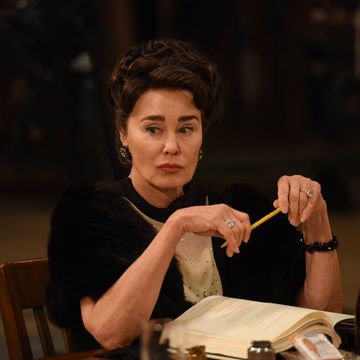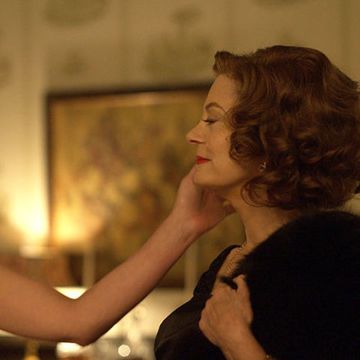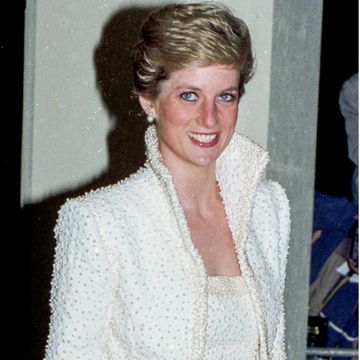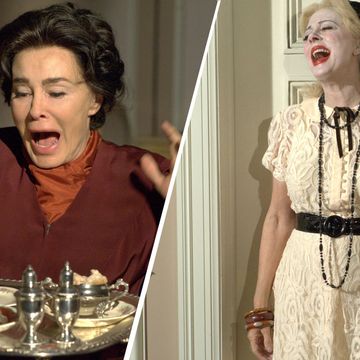The premise behind FX and Ryan Murphy's latest anthology series, Feud, is so deceptively simple that it's hard to believe it hasn't already been done. Each season will see Murphy and his co-producers focus on a different famous feud—much as each season of American Crime Story tackles a real-life crime—and it's already clear that the first set of eight episodes, subtitled Bette and Joan, will be a very tough act to follow.
The rivalry between silver-screen icons Bette Davis and Joan Crawford is the stuff of legend, a decades-long battle sparked by both professional and personal resentments and fueled by an industry that loved nothing more than to see its women tear each other apart. Much of their fighting played out as back-and-forth sniping in the tabloids, though Crawford was always less openly hostile than Davis, whose iconic burns include the classic: "[Crawford] slept with every male star at MGM—except Lassie."
Here's a full timeline of what really happened during Davis and Crawford's four-decade feud.
1933: The Origin
Joan's divorce overshadows Bette's starring role.
Crawford began her on-screen career at a younger age than Davis (Crawford made her first onscreen appearance in 1925) and was already an established star by the time Davis moved to Hollywood in 1930. The first public incident of tension between the pair came out of Crawford upstaging Davis, in what would become a recurring theme.
In 1933, Davis had reached a pivotal moment in her still-nascent career—the comedy Ex-Lady would be the first to feature her name above the title. Warner Bros. had planned an elaborate publicity campaign announcing Davis's new phase of stardom—until Crawford announced that she was divorcing her first husband, Douglas Fairbanks Jr., on the same day. According to celebrity biographer David Bret, The New York Times relegated Davis's film to a small paragraph in the Review section, while devoting several pages to Crawford's news, and other papers followed suit. Ex-Lady was dropped from theaters after a week thanks to poor ticket sales, and Davis's beef was supposedly born.
1935: The Man
Joan marries the actor Bette loves.
"I have never forgiven her for that, and never will." So said Davis in a 1987 interview with journalist Michael Thorton, fifty-two years after the defining incident in her lifelong hatred of Crawford. In 1935, Davis starred in the drama Dangerous and fell hard for her co-star Franchot Tone. "I fell in love with Franchot, professionally and privately," she said. "Everything about him reflected his elegance, from his name to his manners."
Unfortunately, Crawford got to Tone first, and the couple would announce their engagement during the filming of Dangerous. "He was madly in love with her," Davis said. "They met each day for lunch… he would return to the set, his face covered in lipstick. He was honored this great star was in love with him. I was jealous, of course." Crawford, meanwhile, is quoted as saying that Tone, "thought Bette was a good actress, but he never thought of her as a woman." There's no shade like Old Hollywood shade.
"She took him from me," Davis allegedly told Thorton in that 1987 interview. "She did it coldly, deliberately and with complete ruthlessness." Davis would go on to win an Oscar for her performance in Dangerous—and yet Crawford had still managed to upstage her.
1936: The Dress
Joan is unimpressed with Bette's Oscar win.
At that very Oscars ceremony, Davis didn't imagine she would win, and so wore a plain navy dress (an old costume, actually) to the ceremony to slight Jack Warner, who forced her to attend to protest the formation of the Screen Actors Guild. When her name was read out, legend has it that Tone got up and embraced her, while his now-wife Crawford refused to budge and kept her back to Davis. After Tone called her out for being rude, Crawford supposedly turned to Davis and said, with a sneer, "Dear Bette! What a lovely frock." Just imagine the GIFs if this all went down today.
1943: The Move
Joan unsuccessfully attempts a truce.
This was the year that Crawford made her move to Warner Bros. from rival studio MGM and demanded the dressing room adjacent to Davis, who had been at Warner Bros for a decade. Crawford reportedly sent numerous gifts and flowers next door in a bid to win Davis over—all of which were returned.
1945: The Roles
Joan takes Bette's leftovers—and wins the Oscar.
Crawford had her heart set on the title role in the film noir Mildred Pierce and got her wish when Davis—the studio's first choice—turned it down. Director Michael Curtiz was very reluctant to cast Crawford, but finally relented after seeing her screen test. Crawford went on to win her first and only Oscar (which she famously accepted in her bed) for Mildred Pierce.
Two years later, Crawford would take another lead role originally intended for Davis, in the crime drama Possessed, and win another Oscar nomination for it. Despite Davis's oft-quoted line "Miss Crawford is a movie star, and I am an actress," it had become clear that the industry saw more common ground between them than Davis would like to admit.
1950: The Rumor
Bette thinks Joan is in love with her—and might be right.
Given the comparisons, it's no surprise that some producers were keen to get Davis and Crawford on screen together. The women-in-prison drama Caged was intended by Warner Bros. as a joint Davis/Crawford vehicle, but Davis supposedly refused to sign on opposite Crawford, calling the film "a dyke movie." Which leads into another intriguing wrinkle of this feud...
Crawford, who had relationships with both men and women throughout her life, was suspected by some to have harbored a sexual curiosity about Davis. "Franchot isn't interested in Bette, but I wouldn't mind giving her a poke if I was in the right mood," Crawford is quoted as saying by her friend and confidante Jerry Asher. "Wouldn't that be funny?" Asher adds that he was never sure whether Crawford was serious, but felt that she was "attracted to Bette's vitality and energy... Bette was always convinced, due to her ego, that Joan had the hots for her and that's one reason why she was always so antagonistic and called her a phony."
1952: The Roman à clef
Bette plays Joan onscreen.
The romantic drama The Star was written by Crawford's longtime friend Katherine Albert, supposedly as retaliation after a falling-out. Davis was cast in the lead role of a washed-up actress clinging desperately to her fading star power—a thinly veiled, deeply unflattering depiction of Crawford. Davis presumably didn't take much convincing to sign on.
1962: The Movie
Bette and Joan unite—and fight—in their first and only film together.
As depicted in Feud, it was Crawford who persuaded Davis to sign onto What Ever Happened To Baby Jane?, the psychological horror story about a crippled former actress (Crawford) who is terrorized by her deranged sister (Davis) in their Hollywood home. Though the film was an unexpected box office success, and did to some extent represent the comeback that both actresses desperately needed, it became remembered most powerfully as a public document of their real-life rivalry.
Davis agreed to sign onto Baby Jane on two conditions: that she play the title role of Jane, and that the film's director Robert Aldrich assure her he was not sleeping with Crawford: "It wasn't that I cared about his private life, or hers either," Davis reportedly said. "I didn't want him favoring her with more close-ups."
It was on the set of Baby Jane that the most legendary episodes in Davis and Crawford's feud took place. Crawford was on Pepsi's board of directors at the time (her late husband, Alfred Steele, was a Pepsi executive), so Davis had a Coke machine installed in her dressing room just to spite her. In one scene where Jane beats Crawford's character Blanche, Crawford requested a body double because she didn't trust Davis not to hurt her for real. She was reportedly proved right during a close-up in which a body double could not be used, where Davis hit her hard in the head—some reports claim hard enough to require stitches, though Davis insisted that she "barely touched her."
Crawford got her payback during the filming of another scene, where Jane drags Blanche out of bed and across the room. Knowing that Davis had back problems, Crawford made herself as heavy as possible—either by filling her pockets with rocks, wearing a weightlifter's belt or simply making herself deadweight, depending on which report you believe—and deliberately ruined several takes, forcing Davis to drag her around again and again until she was in agony.
1963: The Oscar
Bette gets the nomination, but Joan takes the stage.
Even when filming had wrapped on Baby Jane, the tension kept simmering, helped along by the Academy, which opted to give Davis an Oscar nod for her performance—along with supporting actor Victor Buono—while overlooking Crawford.
Not only did Crawford campaign hard against Davis, who was the favorite for that year's Best Actress prize, but she made arrangements to get up onstage herself at any cost. Noting that several of that year's nominees were unable to attend the ceremony, Crawford offered to collect the Best Actress award on their behalf. And so, when the absent Anne Bancroft's name was read out, Crawford went up to accept the Oscar on her behalf as Davis watched in shock, and posed happily with Bancroft's award alongside the night's actual winners backstage.
1964: The Sequel
Joan ditches her next project with Bette.
Hoping to replicate the success of What Ever Happened To Baby Jane?, Warner Bros. commissioned a spiritual sequel of sorts called Hush... Hush, Sweet Charlotte. It was based on a short story by Henry Farrell, who wrote the novel that Baby Jane was based on, and would see Davis and Crawford reunite on screen as a different pair of women locked in psychological warfare, again directed by Aldrich. Crawford dropped out after a week and a half of filming, claiming that she was unwell—but she was in fact still reeling from the indignities of Baby Jane, and felt at risk of being upstaged by Davis again.
Though Aldrich hired a private detective to track Crawford's movements, he wasn't able to get her back to set, and finally the choice came down to recasting her role or canceling the film altogether. After several actresses turned down the part, Olivia de Havilland was finally hired in Crawford's place.
1977: The End
Bette gets snarky after Joan's death.
Following Crawford's death in May, Davis is often quoted as having said the following: "You should never say bad things about the dead, you should only say good… Joan Crawford is dead. Good." But it's almost impossible to find an actual source for this infamous sick burn, so take it with a pinch of salt.
1978: The Legacy
Joan and Bette actually had a lot in common—including ungrateful daughters.
Whether or not Davis actually delivered that brutal, brief eulogy, she would ultimately soften towards Crawford, even coming to her old enemy's defense following the publication of Mommie Dearest, a damning memoir by Crawford's adoptive daughter Christina that chronicled the abuse she suffered at the hands of her mother.
"I was not Miss Crawford's biggest fan," Davis acknowledged, "but, wisecracks to the contrary, I did and still do respect her talent. What she did not deserve was that detestable book written by her daughter… To do something like that to someone who saved you from the orphanage, foster homes, who knows what. If she didn't like the person who chose to be her mother, she was grown up and could choose her own life."
Davis went on to admit that she "felt very sorry for Joan Crawford, but I knew she wouldn't appreciate my pity, because that's the last thing she would have wanted, anyone being sorry for her, especially me. I can understand how hurt Miss Crawford had to be. Well, no I can't. It's like trying to imagine how I would feel if my own beloved, wonderful daughter, B.D., were to write a bad book about me. Unimaginable."
That last part would soon become bitterly ironic, to a degree that would seem heavy-handed if you wrote it in a screenplay. In 1985, B.D. Hyman would indeed follow in Christina's footsteps, and publish a book entitled My Mother's Keeper, in which she described Davis as a selfish, emotionally abusive alcoholic. For what it's worth, this account of Davis is much more contested than the account of Crawford in Mommie Dearest, and public reaction was largely sympathetic towards Davis. Hyman's adopted brother disagreed so strongly with the book's publication that he disowned her.

Emma Dibdin is a freelance writer based in Los Angeles who writes about culture, mental health, and true crime. She loves owls, hates cilantro, and can find the queer subtext in literally anything.

